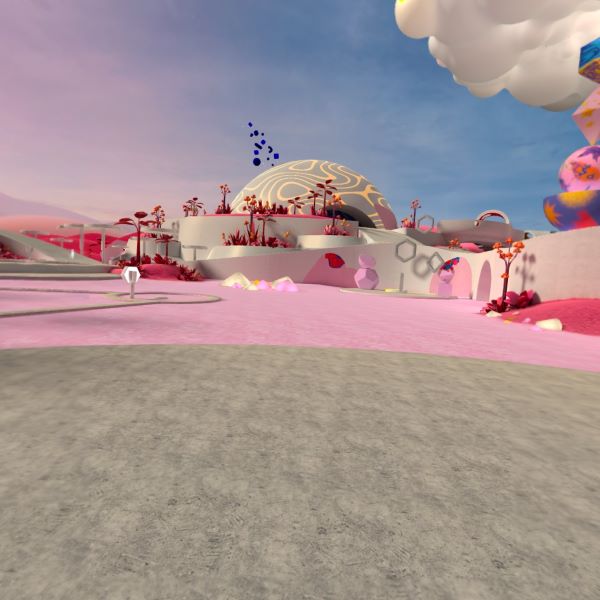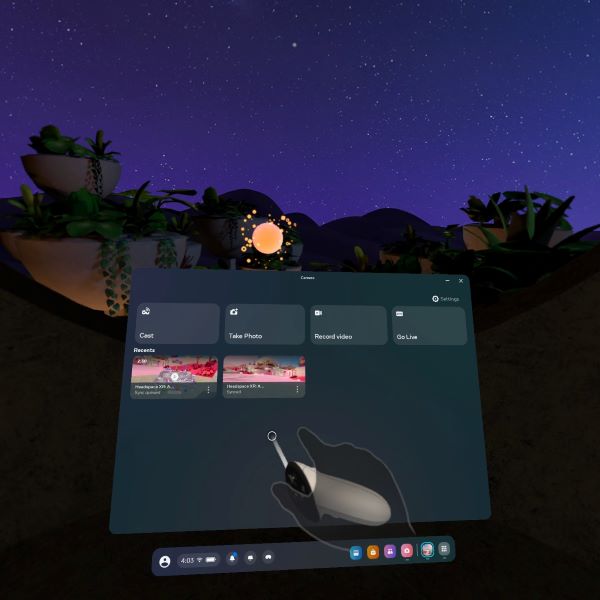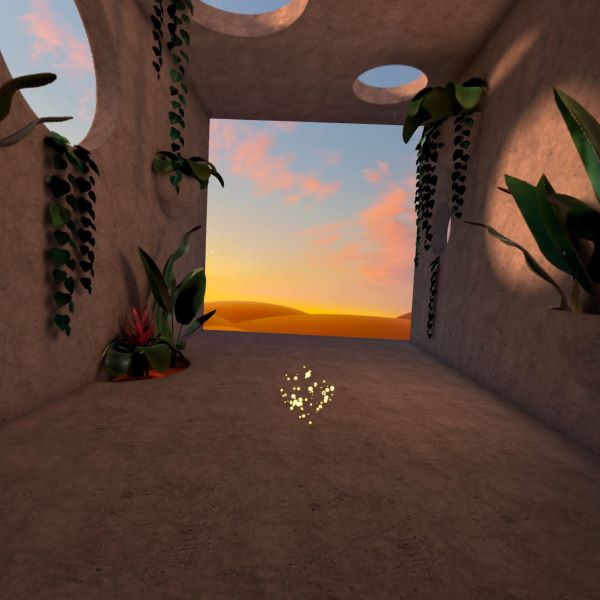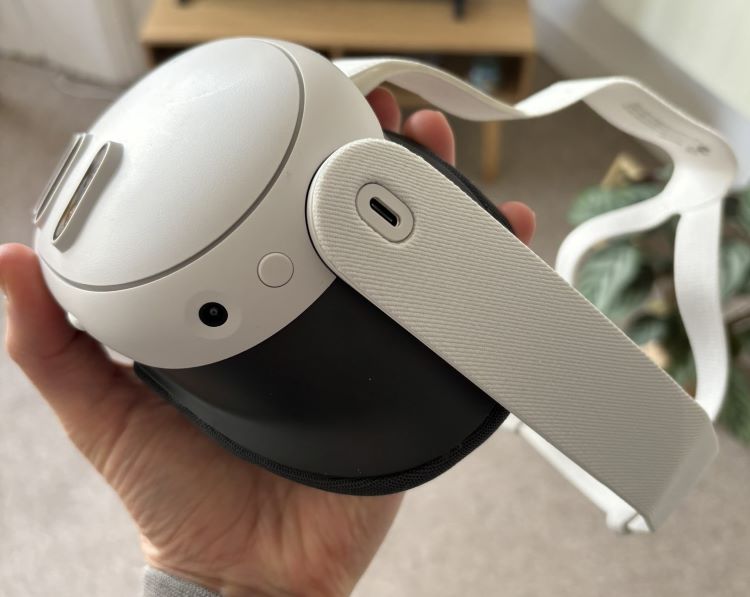Headspace has made a mindfulness and meditation app for use with Meta VR headsets. Joe Minihane sees whether it’s mind expanding or mind numbing.
The people behind the hit mindfulness app Headspace have created the Headspace XR app to encourage virtual exploration of a peaceful meditative realm, helping to discover breathing exercises and to alleviate anxiety. But with the additional expense of a Meta Quest VR headset, does it have any more to offer than existing apps, YouTube channels and mindfulness practices, or is it just too hard to justify the expense?
Men’s Fitness verdict
Though the app itself is well designed, it seems like one of its purposes is to solve a problem Meta has helped create. And unless you’re a Meta owner there are much cheaper ways to meditate.- Fun to play
- Unique games are calming and give you a sense of grounding
- Appeals to those who haven’t tried mindfulness before
- Headset is expensive
- Poor battery life
- Goal to alleviate social media anxiety compromised by affiliation with Meta
I’ve been anxious for as long as I can remember. I’ve used an array of tools to improve my mental wellbeing: swimming in cold water, running, medication, giving up alcohol, cutting back on social media and regular sessions with a therapist.
Meditation has also become a vital part of my arsenal. I have used books, YouTube tutorials and the smash hit app Headspace. The latter taught me some excellent techniques which I have learned to use without my phone, often while I am outside. I was intrigued, therefore, to try the new Headspace XR app (buy now) on the Meta Quest 3, a virtual reality headset from the owner of Facebook.

Who is the Headspace XR app for?
Headspace says its new XR app has been developed with younger Gen Z users in mind, calling it ‘a playground for your mind’. It says it wants to use the app to showcase the power of meditation and mindfulness. The company also believes it can combat loneliness in the process via a multiplayer tool.
Meditation’s healing power is a millennia-old story. A study in the journal Nature exploring the neuroscience behind mindfulness found it increased self-awareness, enhanced attention, improved emotional regulation and could treat clinical disorders.
There is, of course, a certain irony in this. A study conducted by Gallup and Meta itself has shown that “a quarter of adults worldwide feel very or fairly lonely. Younger generations (ages 19-29) feel loneliness more acutely, with 27% reporting they feel very or fairly lonely.”
While the mental health impacts of social media remain hotly contested, a 2023 study in Health Psychology and Behavioural Medicine found that more time spent on social media is associated with higher levels of loneliness. A JAMA Psychology report from 2019 found that adolescents that spend more than three hours a day on social media showed heightened risks of anxiety, loneliness, depression and suicide. And an International Journal of Environmental Research and Public Health paper found that passively scrolling social media heightened social anxiety.
Meta’s social media products, it appears, may be to blame for much of the anxiety and loneliness which Headspace is attempting to combat with its new app on the former’s cutting-edge VR headsets.
Meta Quest design and build quality
To use Headspace XR, you’ll first need a Meta Quest headset. The app works with Meta Quest 2 ($199 / £199), Meta Quest 3 ($499 / £459) and Meta Quest Pro ($999 / £999). We tested it on a Meta Quest 3, meaning that if you wanted to do the same you’d need to shell out $499 / £459 for the headset and a further $29.99 / £22.99 for the app. That’s a lot of money to meditate.
However, there’s no denying either the exceptional build quality and design of the headset itself, which sits comfortably on the head without ever feeling heavy. The supplied controllers make the app easy to navigate, although you can tweak the settings to use gesture controls with your hands instead. I opted for the controllers.



Unsurprisingly, the app design is superb. Like the Headspace app for iPhone and Android it’s playful and intuitive, with colourful areas to explore and no one set path. Gender-neutral avatars replace actual human likenesses, something Headspace says is designed to ease social pressure. The result is a look that feels akin to an early 2000s console game and is all the better for it.
Navigation is straightforward, with Headspace’s in-house mindfulness experts Dora Kamau and Kessonga Giscombe taking you through the initial setup before sending you off to explore. A ‘guide me there’ arrow walks you through the immersive world, but it’s much easier to use the ‘jump right in’ function on the menu (accessible via the menu button on the handset) to get you there quickly.
Headspace XR app performance
Strapping on a VR headset still feels like a futuristic experience. However, the setup process is easy, connecting with a dedicated Meta smartphone app for iPhone, which uses Instagram or Facebook logins to get you going. The entire process takes around 15 minutes. You can set a safe boundary within a room so that you don’t knock into furniture while using the device.
Once you download the app and follow the initial setup guide, you’re then able to explore the Headspace XR world for yourself, choosing from a menu which gives you a choice of different games and tools to try. The process is seamless and the headset tallies well with the in-game world to create something truly immersive.
Headspace XR app features
Headspace XR is packed with different features and can take some time to get to grips with. An hour’s initial use was hardly enough to scratch the surface.
When you first open the app, you see a 3D map of the Headspace XR world. You can also see emojis representing moods, called mood filters. Choose one to reflect how you’re feeling and you’ll be directed to different parts of the world to suit your needs.
There are three main zones within the world: Power Up, where you can try energising games to boost your physical and mental wellbeing; The Playground, designed to help you get creative; and The Hideout, built for meditation and peace of mind.
Headspace makes much of what it calls The Blue Sky Journey. This is based around a tower in the centre of the world. It has levels which you can unlock to reach further into the virtual sky, where you can then try out guided meditations from Kamau and Giscombe. The Blue Sky concept is a basic tenet of much meditation – the clouds which cross the sky are our thoughts, the sky that sits above them and represents the mind. Within the app, it’s powerful and grounding to be able to look up and see a clear blue sky, especially when feeling anxious.
Breathing exercises
The Flow Bursts feature lets you grab balls of energy and use them as breathing aids. It’s a fun and handy tool, especially if you’ve never practised breathwork before. Likewise the Box Treehouse, which shows you how to practise box breathing by following a visual prompt, breathing in for one side, holding for the next, breathing out for the following side and then holding again. It’s a technique renowned for its calming effects and works a charm. I was also a fan of the Mixed Reality box breath function. The camera on the front of the headset scanned my living room, picking out a square picture frame against which I could hone my box breathing.
I also really enjoyed the Power Up game, billed by Headspace as Tai Chi meets VR game Beat Saber. In it you use your hands or controllers to draw in energy balls that surround you and then send them back out. The Blue Sky guided meditations are excellent and something Headspace app users will be familiar with. I was a particular fan of the self-compassion sessions run by Kamau, who has a soothing tone and helped me feel centred.
In truth, though, Headspace XR feels more akin to a game than a mindfulness tool. That’s not necessarily a bad thing, but the sheer amount of things to do can feel overwhelming and sometimes hard to understand, especially when you’re trying to clear your mind of mental chatter.

User experience
The overall user experience takes some getting used to, especially if you’ve never used Meta Quest before. It’s always best to use the menu button, accessible from the controller, to access worlds. Jumping about yourself can take ages.
Then there’s battery life. This is not Headspace’s fault, but two hours is about your limit. So the Meta Quest 3 doesn’t offer much if you want to have an extended session. Visiting all areas of the Headspace XR world and trying different games can’t really be done in a single session. It’s a major letdown, especially as Headspace on your smartphone can keep going for hours at a time if you so wish.
Not being a Facebook user, I didn’t try out the eight person, invite-only multiplayer tool. In honesty, how I deal with my mental health feels very personal and when I do want to discuss it, I want to do so with real humans in a real-world setting. I’ve never found social media or virtual reality eases any feelings of loneliness. If anything, I feel they exacerbate it.
Should you buy the Headspace XR app for Meta Quest?
Headspace XR is certainly novel. It has some interesting ideas on how to bring mindfulness into the virtual world, but in truth it’s a game rather than a meditation tool. After using it for a week, I found the tools helped me stay grounded and calm, but no more so than meditating by myself. The latter doesn’t require putting on a headset which can run out of battery, which happened in the middle of one session with Headspace XR.
It doesn’t help that Meta’s social media services have been linked with the very mental health issues so many people, myself included, seem to struggle from these days. I have had to restrict my social media use because it makes me feel so low. So, while the app is fun to try, it remains hard to recommend unless you already own a Meta headset and are not overly prone to anxiety.
Cost of the Headspace XR app
The $499 / £459 outlay for the headset and $29.99 / £22.99 for the app are massive costs, especially when you can subscribe to the Headspace smartphone app for £9.99 a month or £49.99 a year, and get a huge range of meditation tools that, for my money, are much better than the ones here. Furthermore, if you’re interested in trying meditation, YouTube is full of free videos, from established channels such as Yoga With Adriene to classic talks by gurus like Ram Dass.
The fact you can meditate for free, or at low cost if you want to use an app, means it’s hard to recommend Headspace XR. It’s not that the app is bad; rather that in a world where real human connection is being lost all too easily, meditation doesn’t need to take the step into the virtual plane.
Related content:







